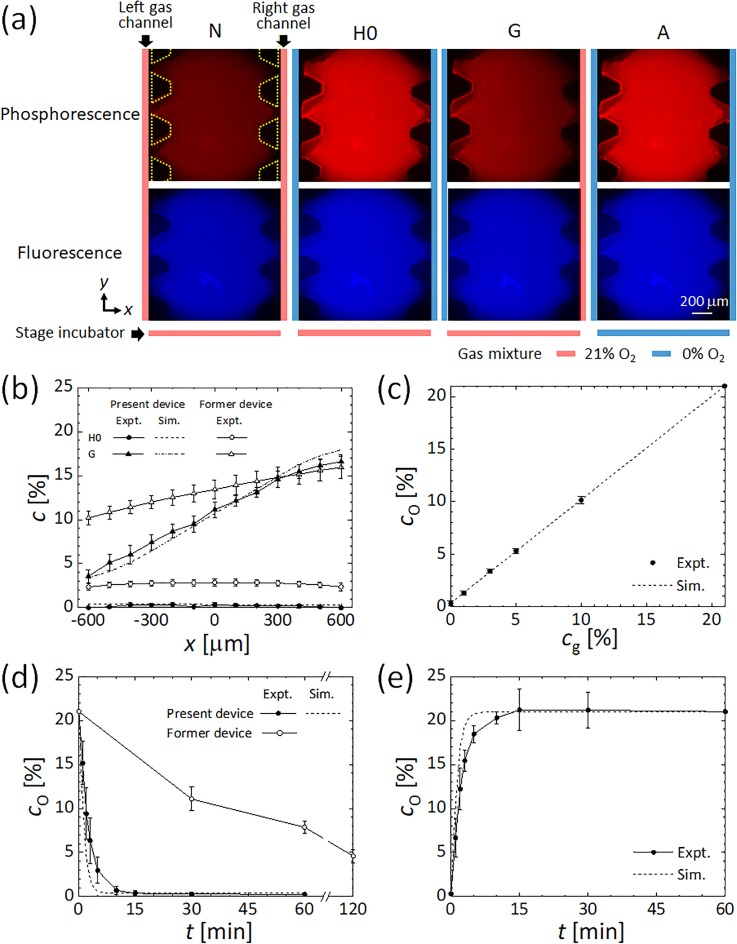FIG. 3.
Results of the validation experiments: (a) microscope images of phosphorescence and fluorescence from the oxygen-sensitive nanoparticles immobilized in type I collagen gel under oxygen conditions of normoxia (N), hypoxia (H0) generated by supplying a gas mixture with 0% O2 to both gas channels while supplying a gas mixture with 21% O2 to the stage incubator, an oxygen gradient (G) generated by supplying gas mixtures with 0% and 21% O2 to the left-hand and right-hand side gas channels, respectively, while supplying a gas mixture with 21% O2 to the stage incubator, and anoxia (A) generated by supplying a gas mixture with 0% O2 to both gas channels and the stage incubator. Colored bars adjacent to each image represent the oxygen concentration in the gas mixture supplied to the left and right gas channels and the stage incubator. Yellow dotted trapezoids indicate the PDMS pillars supporting the media and gel channels. (b) Comparison of the steady oxygen tension profile across the gel channel between the present double-layer and former single-layer devices42 for the conditions H0 and G. The present device can generate a lower uniform oxygen condition and a steeper oxygen gradient than the former device. (c) Linear variation of the steady oxygen tension cO at the center of the gel channel (x = 0 mm) with the oxygen concentration cg in the gas mixture supplied to both gas channels. Transient oxygen tensions at the center of the gel channel after switching the oxygen conditions (d) from N to H0 and (e) vice versa. The oxygen tension equilibrates within 15 min of the switch.

